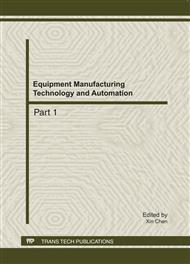p.2335
p.2339
p.2342
p.2346
p.2351
p.2359
p.2367
p.2373
p.2378
Preparation and Characterization of H-PAN Grafted PEG Phase Change Fibers
Abstract:
Using waste polyacrylonitrile fibers as raw materials. After the polyacrylonitrile fibers was hydrolyzed by NaOH and was grafted by PEG, H-PAN grafted PEG phase change fibers were prepared by wet spinning . The spinning process of the phase change fibers was observed, and the best spinning process was determined. Discussed the mechanical properties of the phase change fibers on the spinning solution concentration, crosslinker concentration, coagulation bath concentration and coagulation bath temperature. Temperature adaptable and durability properties of phase change fibers were characterizated by step cooling curves. The results showed that the best spinning process of the phase change fibers was the spinning solution concentration 20%, crosslinking agent concentration 4%, the concentration of coagulation bath 90%, the solidification temperature 30°C. The phase change fibers had good temperature adaptable property and temperature adaptable durability.
Info:
Periodical:
Pages:
2351-2355
Citation:
Online since:
August 2011
Keywords:
Price:
Сopyright:
© 2011 Trans Tech Publications Ltd. All Rights Reserved
Share:
Citation:


